First thing to think about when building a pergola like this, is to consider some of the properties of green oak. Number 1, it’s never massively uniform. This does depend on the supplier a lot, but even if you find a supplier that is considered very precise, it will not be anywhere near as uniform as treated softwood. Even with the annoying continuous steep drop in the quality of all building materials lately, but that’s another story.
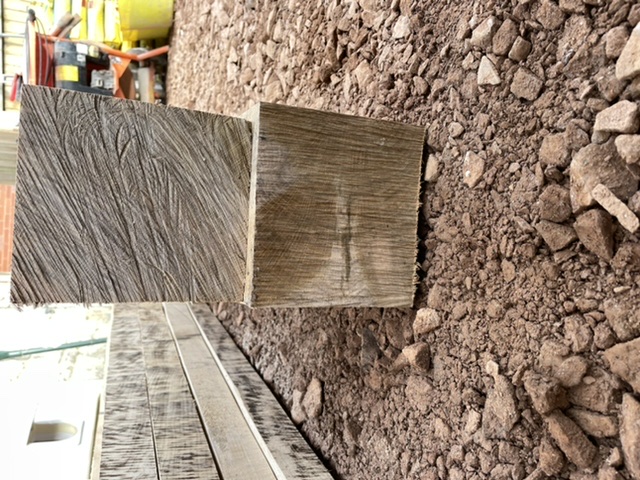
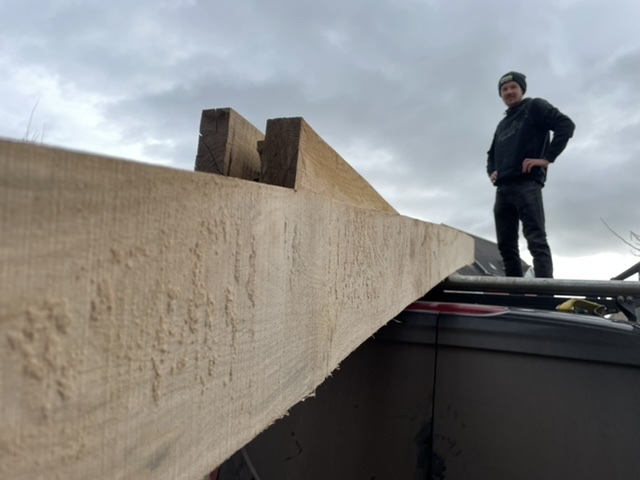
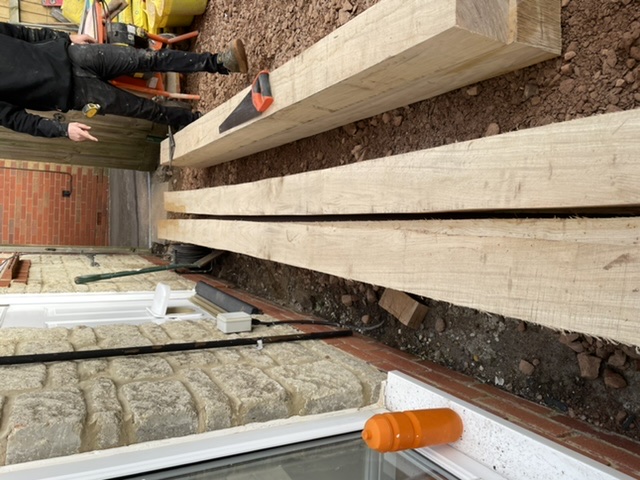
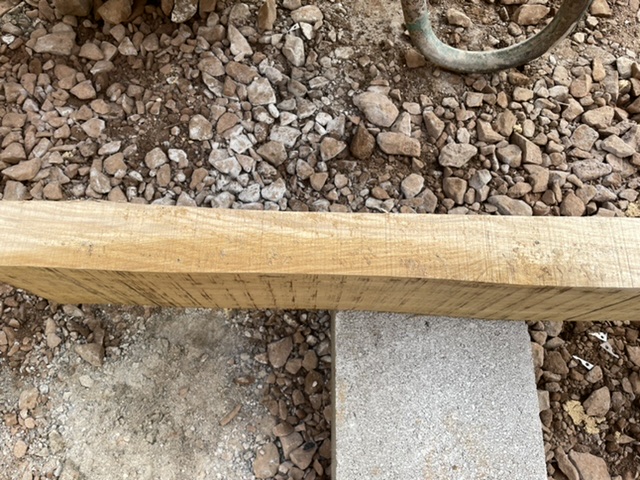
As you can see in these pictures, precision cutting is never fantastic on this material, but for me, it’s all part of the brilliant character of it all. Which leads me to my 2nd property of green oak, which is the amount it will warp and crack as it all dries out. This is one of the reasons it comes out of the sawmills with what seems to be a low tolerance on quality. Even if it was cut and planed to the precision of a formula one engineer, within a few months of sunshine, it will all start to move about, and just like I said before, I see this as a very nice characteristic of the material. 3rd property is the colour. A few clients have insisted on oiling oak, but for me, I’d leave it as nature intended, and let it silver up over the next few years.
With this pergola it was very straight forward as it was a lean to design. So a wall plate (150mm x 75mm) was bolted to the wall of the house to carry the back of the rafter (or maybe joist depending on where you are from) and the front edge was also sat on a 150mm x 75mm timber which was attached to the top of 150mm posts. The posts concreted into the ground and were notched to carry the joist, then the rafters were half notched to sit onto the wall plate and joist. A total of 5 rafters were fitted and that was that. A full oak pergola built in less than a day.
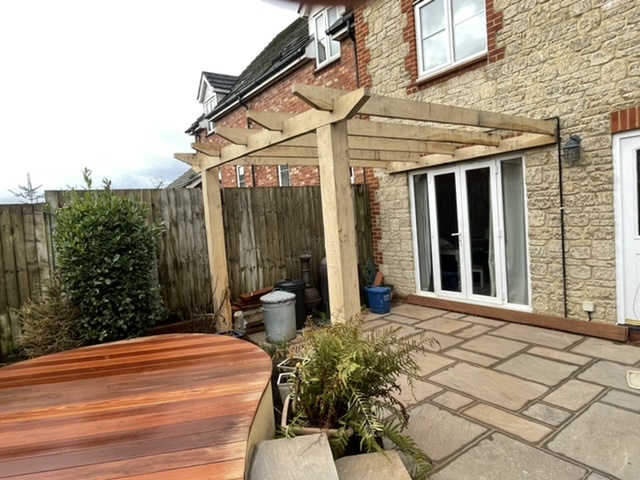
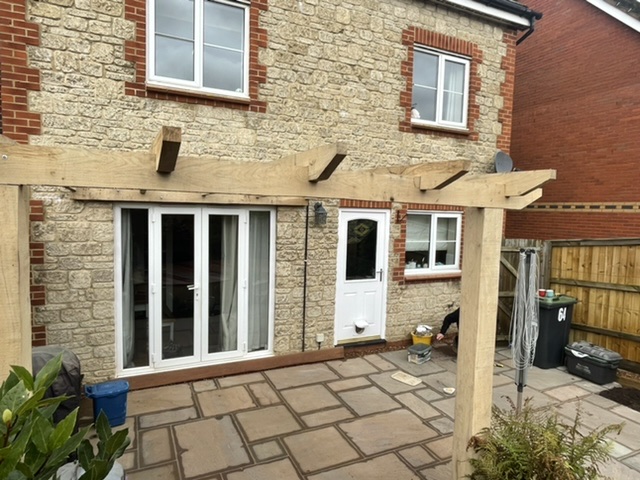
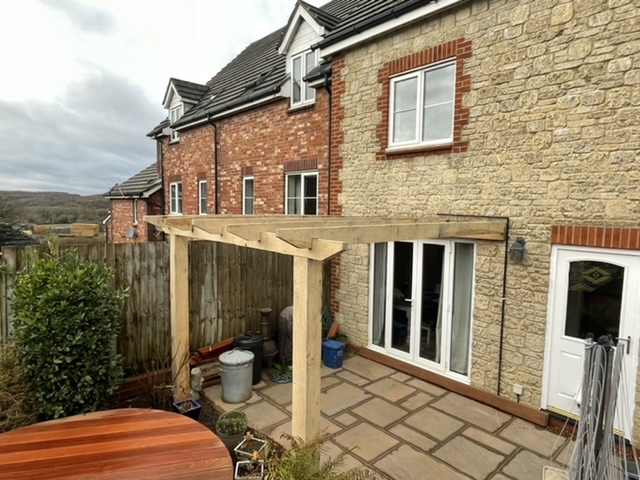
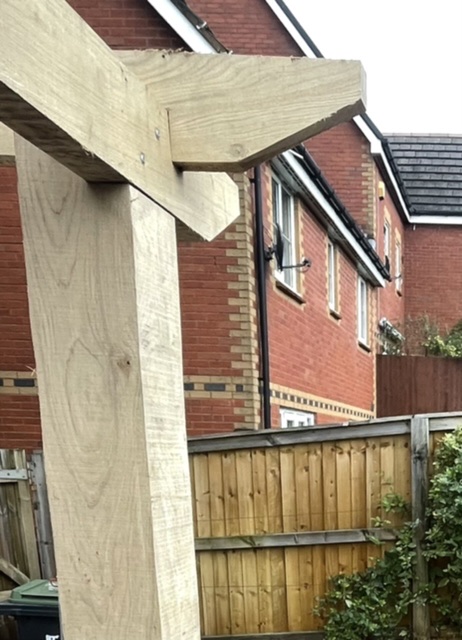
Nice, simple, quick, and will last for many years. Any questions feel free to ask.
Thank you for your interest.
The age of growing, let’s go!🌳🌳🌳